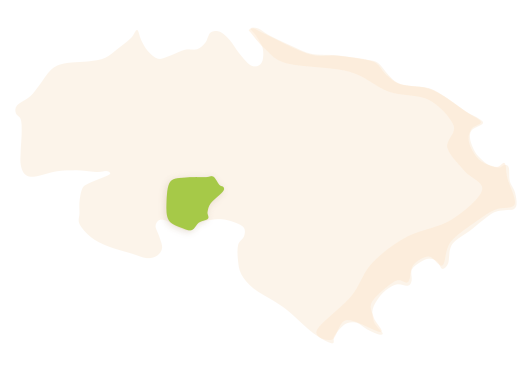Benigembla is a municipality located in the southwestern part of the inland area of La Marina Alta, nestled within the valley known as La Vall de Pop, on the border with the neighbouring La Marina Baixa region. It is situated at an altitude of 314 metres above sea level, with an area of 18.4 km² and 483 inhabitants who are known as Benigembler and Benigemblera.
 Benigembla's municipal district. Surface area: 18.4 km². Population: 483 (INE data 2021).
Benigembla's municipal district. Surface area: 18.4 km². Population: 483 (INE data 2021).HISTORY
The village is surrounded by emblematic peaks such as El Cocoll, which is one of the few peaks in La Marina that is over 1,000 metres high, standing at 1,048 metres; and Cavall Verd, a historic summit where the Moorish revolt of 1609 took place, just before their expulsion. Along with these two geographical landmarks, the Gorgos River is the determining element of the municipality, as demonstrated by the numerous well-preserved hydraulic heritage aspects: aqueducts, ponds and fountains.
Benigembla and Vernissa, which is a farmhouse that no longer exists, were the two population centres of the Muslim mediaeval period. The name of the village, according to the Alcover-Moll dictionary, comes from the union of beni, which in Arabic means “sons of”, and jamla, which was a family name. Another hypothesis is to be found in a book by Severino Giner Guerrion which says that the name of Benigembla could come from Baniambla, the name of an Arab family related to the creation of the farmhouse. With the arrival of the Christians and according to the Repartiment documents, these lands were ceded to Pere d’Altafulla.
Benigembla became the scene of one of the most important historical episodes of the 17th century, due to the fact that after the publication of the edict of expulsion of the Moors, signed by Felip III in 1609, thousands of Moorish families rebelled and arrived through Petracos to Benigembla where they climbed the mountain all the way to the crest. Almost 17,000 people tried to resist on Cavall Verd, while Benigembla became the quarters of the king's army with General Agustín Mejía in charge. Finally, the Moorish population was defeated and their revolt quashed.
In the 19th century, Benigembla had a considerable raisin production that became the municipality’s main economic motor. It is very easy to come across one of the various “riuraus” used to dry the raisins that were later exported. However, with the phylloxera crisis, the first migrations began, in this case mainly to the United States, creating a connection which still persists today with families that live there and return to the village every summer.
Another fundamental episode in the history of Benigembla is the flood of 1957, which caused the destruction of a large part of the village. Due to this event, the construction of a monumental retaining wall took place, known as El Ribàs, which protects the village and whose benefactor was Baldomero Vega de Seoane. Such is the importance of El Ribàs that it became the main symbol of the municipal coat of arms.
The main force of the local economy is still agriculture, based on citrus trees and olive trees of which there are some centenarian examples worth visiting.
FESTIVITIES
- Local festivities are celebrated in honour of Saint Joseph, Saint Augustine, Saint Francis and the Assumption, from August 12th to 17th.
- On the 16th and 17th of January the festivities of Saint Honorat and Saint Antoni are celebrated.
- BIMAU is the acronym for Benigembla Internacional Mostra d'Art Urbà (the International Benigembla Urban Art Show). Its main characteristic is the conversion of the walls of the municipal buildings into canvases.
GASTRONOMY
- The flatbreads known as “coques” are very prominent in Benigembla, in all their variants. You can try the flatbreads made with scalded flour (“minxos”) cooked on the grill with various kinds of fillings, the fried coques with tomato and anchovy, or the baked coques.
- Regarding snack dishes, “borreta de melva“ is one of the most significant fish dishes throughout the year, and “espencat” is also important (especially during summer, when vegetables are in full production).
- Rice dishes are also a fundamental part of the local diet, amongst which it is necessary to highlight the soupy rice called “arròs caldós”, with the famous “penques” (or cardoon stalks) and turnips, and the “putxero” stew with meatballs, which are mainly consumed during the winter period.